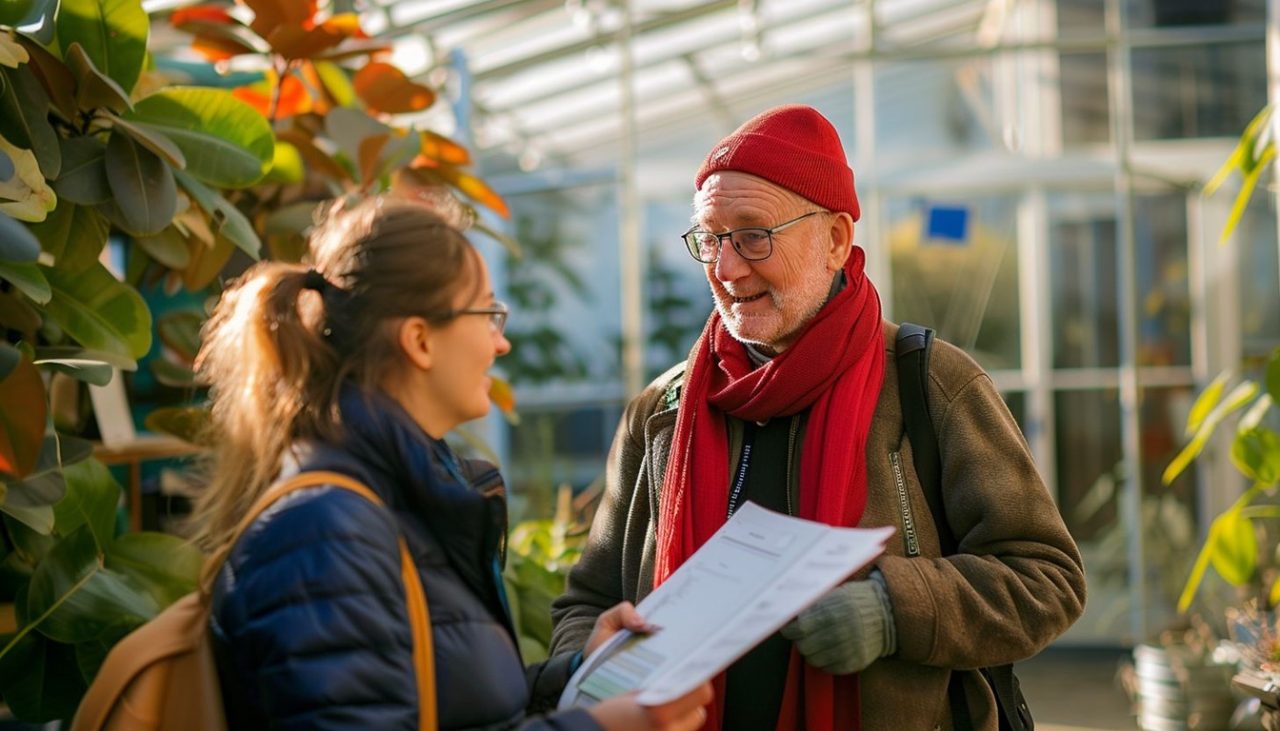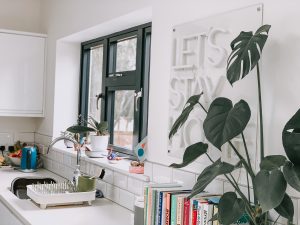Greenhouse gardening lets you control the environment around your plants. This means you can manage how much light, water, and warmth they get. It’s like giving your plants a custom home where they can grow better. You need to think about how much space each plant needs, so they don’t crowd each other out. Also, some plants might not get along because they fight for food, or one might make the other sick.
Using greenhouses also helps protect your plants from bad weather and pests. But you have to be careful about what you grow inside. Some plants are too big and will take over, while others can bring diseases that hurt all the other plants nearby.
Plus, certain types of flowers and veggies don’t like being too close because they release chemicals that can harm their neighbors. This makes picking the right mix of plants very important for keeping a healthy greenhouse garden.
Plants to Avoid in a Greenhouse
Avoid growing melons and squash, potatoes, sunflowers, radishes and broccoli, corn and tomatoes, cauliflower and broccoli, onions and garlic, marigolds and beans, eggplant in a greenhouse.
Melons and Squash
Melons and squash grow very large and spread out. They easily take over space in a greenhouse. Their vines can get tangled with each other. This makes diseases more likely to spread between them.
These plants need lots of air movement to stay healthy. In a crowded greenhouse, they might not get enough.
Next, we should talk about why potatoes are also tricky to grow in a greenhouse environment.
Potatoes
Moving from melons and squash, we see that potatoes also face challenges in greenhouses. These tubers shouldn’t share space with invasive plants like butterfly bushes or Japanese honeysuckle.
Such invaders take over quickly, leaving little room for potato plants to thrive. They consume nutrients and light, harming the local ecosystem.
Invasive species such as wisteria and privet hedges also pose a threat to potatoes grown under glass. These hardy climbers can choke out potato crops by blocking sunlight and stealing water.
It’s vital to keep these aggressive growers away from your greenhouse potatoes if you want a healthy harvest without harmful competition.
Sunflowers
Sunflowers, known for their tall stalks and bright faces, can actually harm other plants in your garden. They release chemicals into the soil that might stop nearby plants from growing well.
This makes them a wrong choice for greenhouses where space is tight, and you want many different plants to thrive together.
Growing sunflowers inside a greenhouse could also cause problems because they need lots of light and might block smaller plants from getting enough sunlight. Their large roots can disturb the root systems of neighbouring plants, further reducing their chance to grow strong and healthy.
So, it’s best to keep these beautiful flowers outdoors where they have plenty of room and won’t harm other members of your garden family.
Radishes and Broccoli
Radishes and broccoli can harm each other if planted together in a greenhouse. They compete for nutrients, making it hard for both to grow well. This competition leads to weaker plants that might not produce as much.
Gardeners should plant these vegetables separately. By doing this, radishes and broccoli will get all the nutrients they need without fighting for them. It ensures healthier plants that give more harvest.
Corn and Tomatoes
Corn and tomatoes share common enemies in the greenhouse. These include similar fungal diseases and a pest known as the corn earworm, which can cause significant damage to both plants.
Growing these crops together increases their risks of infection and infestation, making them poor choices for close companions in confined spaces.
Both crops also demand a lot of light. Corn can grow tall and cast shadows over tomato plants, reducing the sunlight that tomatoes need to thrive. This shading can stunt growth and reduce yield in your tomato crop, making it harder to get a good harvest from either plant if they’re too close together inside a greenhouse environment.
Cauliflower and Broccoli
Moving from corn and tomatoes, we now focus on another pair: cauliflower and broccoli. Both these leafy greens share a lot in common, which might seem like a good reason to plant them together in your greenhouse.
Yet, this approach can cause problems. Cauliflower and broccoli are attractive to the same diseases and pests. This makes them more vulnerable when they stand side by side.
One major issue is club root disease. This illness hits fast and can kill plants quickly. It spreads easily between cauliflower and broccoli because they are so closely related. To keep your garden healthy, it’s wise to separate these vegetables when planting them in a greenhouse setting.
This stops disease from moving from one plant to the other, keeping both safer from pests as well.
Onions and Garlic
Onions and garlic need a lot of sunlight to grow well. Getting enough light inside a greenhouse can be hard. These plants also like soil that lets water through easily. In a greenhouse, making sure the soil is just right can be tricky.
Because they have special needs, onions and garlic might not do their best in a greenhouse environment.
These vegetables are usually happier growing outside. They take up quite a bit of room as well. It’s often better to plant them in open fields or garden beds where conditions match what they need more closely.
Next, we’ll talk about why marigolds and beans might not suit your greenhouse either.
Marigolds and Beans
You should not plant marigolds near beans and peas in your greenhouse. Marigolds can harm beans by competing for nutrients and space. This makes it hard for both plants to grow well together.
Each plant needs its own kind of care, which might not be possible when they share the same area.
Beans are part of a group called legumes, while marigolds are flowering plants often used as living mulch. Having them close can lead to problems because they don’t work well as companion plantings in a confined space like a greenhouse.
Instead of helping each other, they end up fighting for what they need to thrive, leading neither to do well.
Eggplant
Eggplants should not be planted near tomatoes, peppers, and potatoes to prevent attracting pests and diseases. However, they grow well when placed near spinach and beans. These plants need careful placement among others to thrive without causing harm.
Rosemary
Rosemary, a fragrant and versatile herb, has beneficial properties for companion planting. It does well near cruciferous vegetables like broccoli and kale but should not be planted near cucumbers.
Rosemary acts as a natural pest repellent for cabbage moths when grown alongside cruciferous crops like broccoli and kale, making it an excellent choice for enhancing the health of these plants while deterring pests without the use of harmful chemicals.
This aromatic herb also enhances the flavor of various companion plants like beans, carrots, and sage due to its allelopathic effects which can promote their growth. However, caution should be exercised when considering rosemary’s proximity to certain plants such as cucumbers since they may not thrive in its presence.

Incompatible Garden Plants for Greenhouse
Avoid planting carrots and dill together. Find out why by clicking to read more about incompatible garden plants for your greenhouse.
Carrots and Dill
Carrots and dill may not thrive in a greenhouse due to specific requirements and certain incompatible plants. These incompatible plants can impact the growth of both carrots and dill, affecting their development.
It’s important to be mindful of these factors when cultivating carrots and dill in a greenhouse environment.
Next, let’s explore the challenges associated with growing spinach and potatoes together.
Spinach and Potatoes
Spinach and potatoes should not be planted near each other due to their incompatible nature. This is because spinach, being a heavy feeder, may disrupt the growth of nearby potatoes which require proper nutrients for successful cultivation.
Ideally, it’s advisable to plant these crops in separate areas to avoid any detrimental effects on their growth. Additionally, this separation can reduce the risk of diseases that might spread between the two types of plants.
To ensure optimal growth and yield, it is crucial to consider these aspects when planning your greenhouse garden layout. By understanding the specific needs and compatibility of different plant varieties, you can establish an environment conducive to healthy growth without concerns about potential negative impacts on neighboring plants.
Alfalfa
When it comes to alfalfa, its potential impact on the local ecosystem is significant. Alfalfa has the capacity to exert allelopathic effects on certain plants. Additionally, it can be invasive in specific contexts.
Consider instead planting native shrubs and groundcovers as alternatives.
Alfalfa’s potential allelopathic presence can affect neighboring plants and change the dynamics of a greenhouse garden. Its invasiveness should prompt consideration for alternative options that are more compatible with local ecosystems and wildlife.
Cucumber and Basil
Cucumber and Basil could face challenges when grown with certain plants in a greenhouse. These incompatible plants can compete for resources and space, leading to reduced yields and poor growth.
This interference can affect the overall health of Cucumber and Basil, emphasising the need to carefully consider their companions when planning greenhouse planting.
Pumpkins and Potatoes
Moving on from garden incompatibilities involving cucumbers and basil, it’s important to note that pumpkins and potatoes are plants not recommended for greenhouse growth. These two require a significant amount of space due to their spreading nature and can easily overcrowd the other plants.
Pumpkins and potatoes compete aggressively for resources like water, sunlight, and nutrients with other greenhouse plants, posing a challenge for maintenance.
Not only do they take up ample room which could be utilised by other compatible species in the greenhouse, but also their sprawling vines can quickly dominate the available space. Therefore, it’s advisable to cultivate pumpkins and potatoes in open outdoor spaces where they have sufficient room to spread out without encroaching upon other plant varieties within close proximity or potentially stifling growth through competition.
Peppers and Potatoes
Peppers and potatoes can’t be grown near eggplant, tomatoes, kohlrabi or fennel to avoid attracting pests and diseases. Pumpkins should not be planted near potatoes as the mulch from the pumpkin vines may harm the potatoes.
Black Walnuts
Black walnuts release a chemical called juglone, which can be toxic to certain plants and inhibit their growth. It is advisable to avoid planting tomatoes, potatoes, peppers, aubergines, and other solanaceous plants near black walnut trees due to their sensitivity to juglone.
Furthermore, blueberry bushes, azaleas, rhododendrons, mountain laurel, apple trees along with pear and cherry trees as well as black raspberry and blueberry bushes can also be negatively affected by the presence of black walnuts.
Additionally, roses might exhibit stunted growth or yellowing leaves when planted near them.
Your choice of greenhouse should match the plants
One thing is to avoid the plants and crops that are not suited for cultivation in a greenhouse. Another thing is to acquire a greenhouse that suits the plants you want to grow. It’s about the size, design, layout, and materials the greenhouse is made of.
If you look at webshops such as Juliana and Halls Greenhouses, both of which sell greenhouses in various designs and styles, you can find one that suits your needs.









No Comments